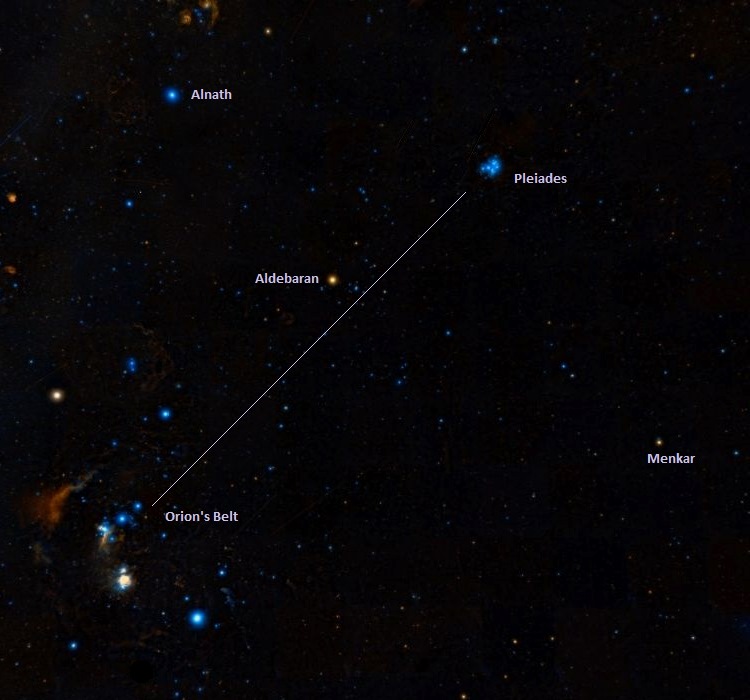Sa Ji Tario wrote: ↑Fri Apr 20, 2018 11:33 am
To say the texts, the Hiades are older than the Pleiades and also were not born from the same molecular cloud (the Pleiades is said to be the Orion nebula) and at the end they have different movements in space. My question, is this like this? )
Orion and the Pleiades, with the Hyades and Aldebaran between them.
Photo: Wikisky.
No, the Pleiades are not the Orion Nebula. As you can see in the picture at left, the Pleiades and Orion are relatively far apart. The Orion Nebula is the yellowish object that you can see below Orion's Belt in the picture.
According to Wikipedia, the estimated age of the Hyades is 625 million years. That is fairly young, and it is much, much younger than our Sun, which is some 4.5 billion years old or so. Nevertheless, the Hyades cluster is so old that all its O- and B-type stars have run through their entire life cycle and ended up as tiny, faint white dwarfs. The brightest stars in the Hyades are yellow-orange K-type giants and white to faintly bluish-white A-type main sequence stars.
The Pleiades are younger. Their estimated age is about 100 million years. The brightest stars in the Pleiades are all blue stars, which is a sure sign of youth. In the Pleiades, the blue stars belong to spectral class B. These stars are hot and blue, but nowhere near as hot and blue as O-type stars.
The Orion Nebula is powered by a small group of extremely young stars, less than a million years old. The brightest and hottest of these stars is Theta 1-C Orionis, a blisteringly hot and bright O-type star.
Ann
 Moon in the Hyades
Moon in the Hyades